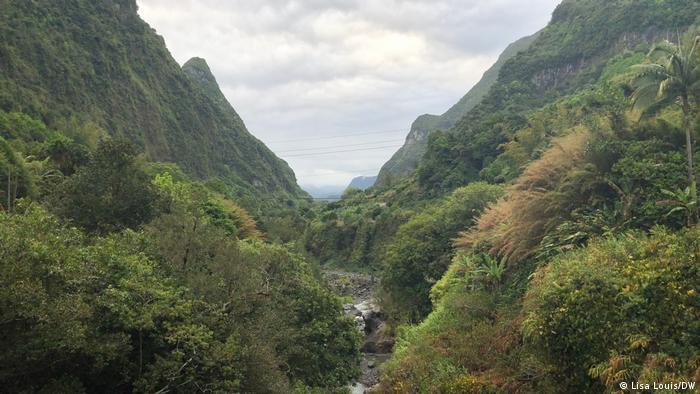Meet the snow hunters tracking melt in Scotland's mountains
Each year a small group of dedicated volunteers survey the mountains of Scotland's Highlands to monitor the UK's last patches of snow. Their data is invaluable for scientists measuring the effects of climate change.
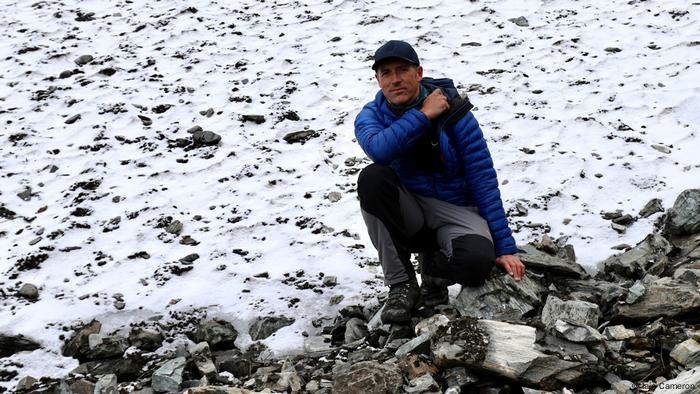
Snow hunter Iain Cameron has been fascinated by Scotland's Highland snow patches since he was a teenager
From a distance, the snow patch looks brilliant white, but up close it's pitted with gray stones and grit from the cliffs above. Despite its scruffy appearance, snow hunter Iain Cameron is delighted to find this fragment in October.
Below the rocky ramparts of Scotland's 1,234-meter (4,050 feet) Aonach Beag, he puts down his rucksack and takes out a large measuring tape. The patch is only around 30 by 20 meters and, he estimates, a couple of meters thick. It's small but will turn out to be the sole remaining patch of snow in Scotland — and the UK — in 2021 to last from the previous winter.
Aonach Beag lies near the Highland west coast close to the UK's highest mountain, Ben Nevis. The longest-lasting snow patches in the Scotland are all in the Ben Nevis area or in the high, rounded Cairngorm Mountains, 70 kilometers (43 miles) to the east.
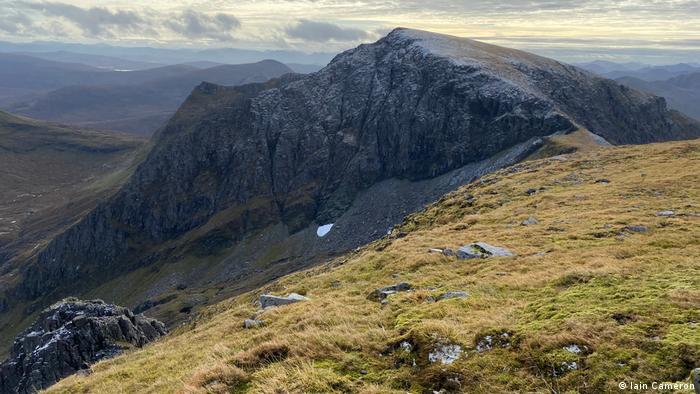
The last remaining year-round snow patch in Scotland. The patches are an indicator of changing temperatures in the Highlands
The first recorded disappearance of all snow in the Scottish mountains was in 1933 and, since then, a disturbing pattern has emerged, says Cameron.
"The snow only vanished completely again in 1959, then it went in 1996, 2003, 2006 and 2017, and it very nearly melted in 2019 as well," he says. "It doesn't take a genius to see that the rate of disappearance is accelerating — and climatologists tell us this is down to climate change."
Cameron, a hardy hillwalker and, by profession, a health and safety adviser, is Scotland's unofficial chief snow-patch expert. The 48-year-old first became captivated by the patches as a teenager when he saw one last throughout the whole summer.
He's part of a small, informal group of walkers, skiers and mountaineers, linked up through social media, who hunt these snow patches, monitoring them as often as possible through summer and autumn. They're all amateurs driven by a love of snow and a desire to quantify the changes they see in the mountain climate.
"It's fascinating, and important to maintain the record," says Cameron, who has written a book on the topic. "And it gives a sense of purpose when you head out into the hills."
Disappearing snow
In the 19th and early 20th centuries climbers from the Scottish Mountaineering Club used to record patches of snow. Scientific study of the patches began in the 1940s, and for the past 25 years data produced by Cameron and friends has been submitted to the UK's Royal Meteorological Society, which publishes an annual paper on the results.
The snow patches are an indicator of temperature changes in Scotland's mountain regions, which are part of the 17 to 18 million square miles of the Earth covered in snow each winter. Its white surface reflects sunlight, helping cool the planet; its melting maintains river levels even in dry weather, and icy meltwater keeps them cool.
Scotland's mountains have no glaciers or permanent snowfields, but most years a few patches of snow survive from one winter into the next. Snowmelt in the spring and summer cools rivers such as the Spey, famous for its salmon. The river is already warmer partly because of lower snow coverage. Fish such as salmon and trout reproduce less well in warmer water.
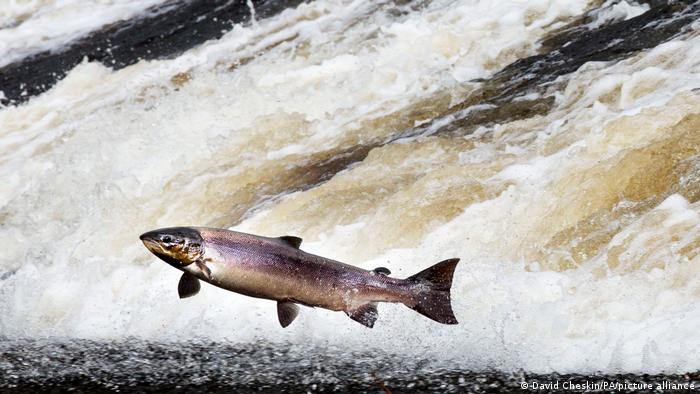
Warmer waters impact the ability of trout and salmon, for which Scotland is famed, to reproduce
A study led by statistician Mike Spencer from Edinburgh University, based on other data gathered over many decades, found a clear decline in snow cover in the Cairngorm Mountains over a period of 35 winters. He says by 2080, the Cairngorms could have winters without any substantial snow cover at all.
'Invaluable' citizen science
Another snow hunter is Helen Rennie, now 68, from Inverness, who started visiting the ever-shrinking patches when setting a remarkable record of skiing in Scotland every month of the year for 10 successive years.
She would have started in 2006, but a cancer diagnosis that year put an end to that plan. She recovered, and, undeterred, started her record-breaking run in 2009, with only the COVID pandemic stopping her.
She still gets up to the patches when she can. "The snow needs to build up over the year for the patches to be substantial and last," she says. "There are so many variables with snow patches: the direction the snow comes from; the weather after the snow has fallen; if you get many freeze-thaw cycles that solidify the snow into ice. If it's permanently cold, it stays soft and fluffy."
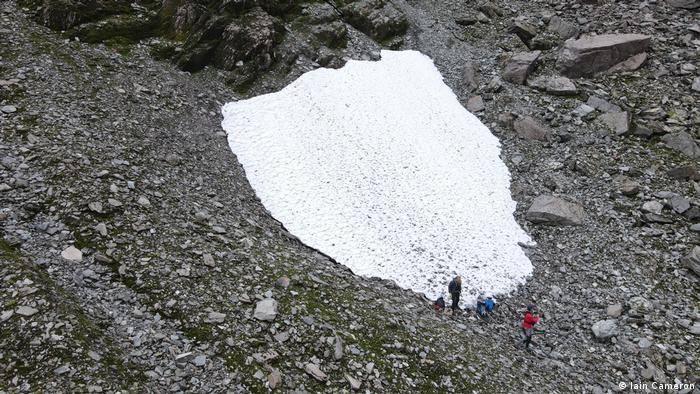
Snow hunters like Cameron and Rennie say they have an emotional attachment to the Highland areas
Snow scientist Alex Priestley from Edinburgh University is studying how snow melts and how that affects snowpack in Scotland and the Alps. As Scotland's mountains are usually in cloud, satellite images are of limited use in snow-cover studies, which makes data from snow hunters like Rennie and Cameron invaluable.
"To understand how these remote places are affected by our changing climate is really important because lots of biodiversity depends on it," says Priestley.
Priestley explains that Scotland is home to animal species, such as the dotterel bird, that are living at the limit of their natural range.
"If they were in the Alps, they would just ascend the mountain a few hundred meters if it got warmer, to get back into their comfort zone. But in Scotland if they are already living at 1,200 meters … they run out of mountain."
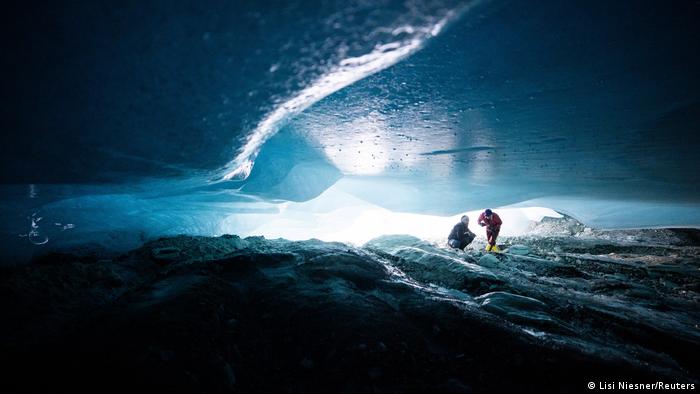
Glaciologists explore a glacier cavity in Austria. Receding glaciers and earlier snow melts are affecting temperatures in rivers
He says detailed snow-patch data can be used as a proxy for changes in general snow cover to see how that correlates with changes in wildlife behavior.
"These human observations that are a long-time series of observations of very remote places, the fact that we can have them is in itself just fantastic because they're so difficult to get hold of in other ways."
Harsh realities
In late November, a cold storm front sweeps through the Highlands. The patch on Aonach Beag had melted down to 15 meters but is finally buried in snow. This year at least will be recorded as one when snow survived.
It's a relief to the snow hunters, who had feared another year of total loss. But Cameron knows those years will become more frequent.
"As someone who visits these places and has done for decades now, when you go back to a place time after time you get to know it intimately ... You have this irrational, alomost, attachment to it," says Cameron.
"The people who do this will all express the same sort of feeling and it's a sadness ... an emotional experience as much as it is a scientific experience."
Edited by: Jennifer Collins
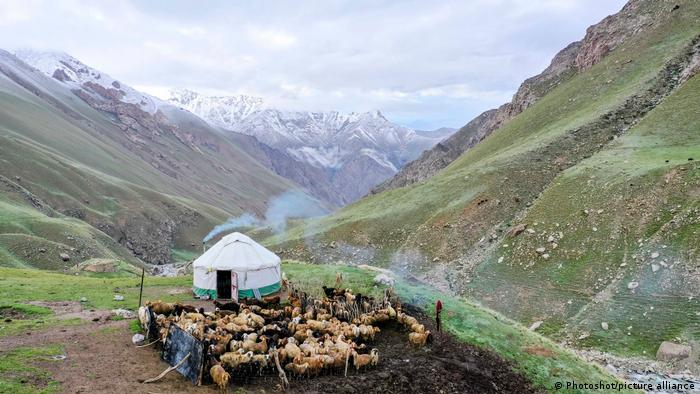
CLIMATE CHANGE IS THREATENING THE WORLD'S MOUNTAIN REGIONS
Highly susceptible to climate change
The world's mountains are rugged, but delicate. They have a huge impact on even distant lowlands but are highly sensitive to climate change. Temperatures are rising significantly faster in mountain areas, well outpacing other habitats. As a result, snow and glaciers are disappearing with consequences for water systems, biodiversity, natural disasters, agriculture and tourism.
123456789
New analysis highlights warming atop Mount Washington
January 6, 2022
NORTH CONWAY, N.H. (AP) — A new analysis of meteorological data collected atop the Northeast’s highest peak is shedding light on how climate change is playing out in the mountains.
Georgia Murray, a staff scientist at the Appalachian Mountain Club, says a shortage of data remains a challenge to understanding climate change on mountains, but fortunately the Mount Washington Observatory has maintained an extensive and continuous record.
She recently published a study based on an analysis that incorporated new data collected over the last 15 years from both the observatory’s summit weather station and nearby Pinkham Notch with an existing data set going back to 1935.
Past research showed that Mount Washington’s summit had not tipped toward a significant warming trend in contrast to the rates of change at lower elevations. But the recent data show that statistically significant warming is in fact taking place at both Mount Washington’s summit and Pinkham Notch.
___
In this story originally published Jan. 2, 2022, The Associated Press reported that Murray recently published a study analyzing meteorological data from the last 15 years from the Mount Washington summit and nearby Pinkham Notch. The story should have made clear that she incorporated new data collected over the last 15 years with an existing data set going back to 1935.



